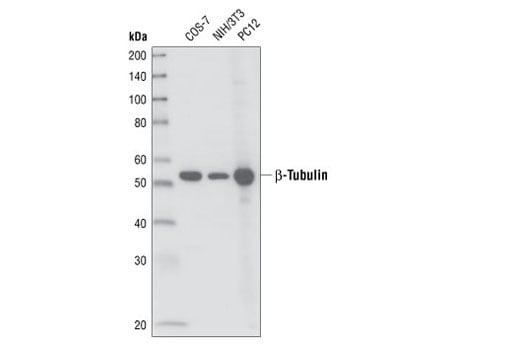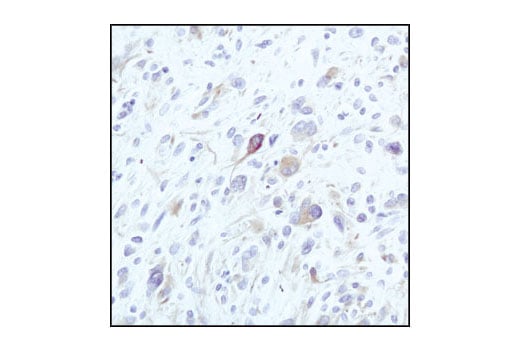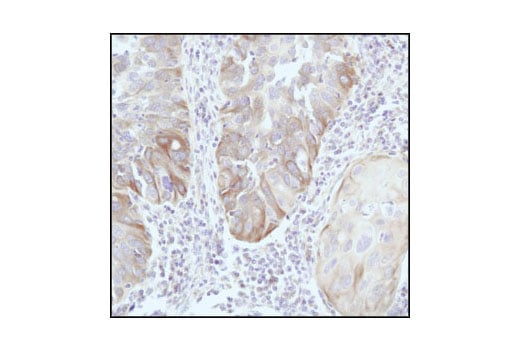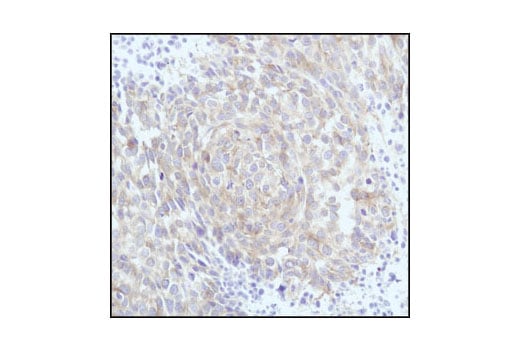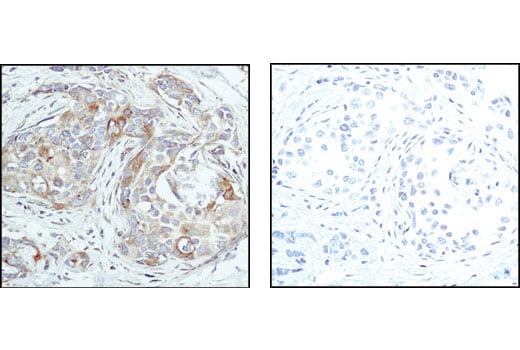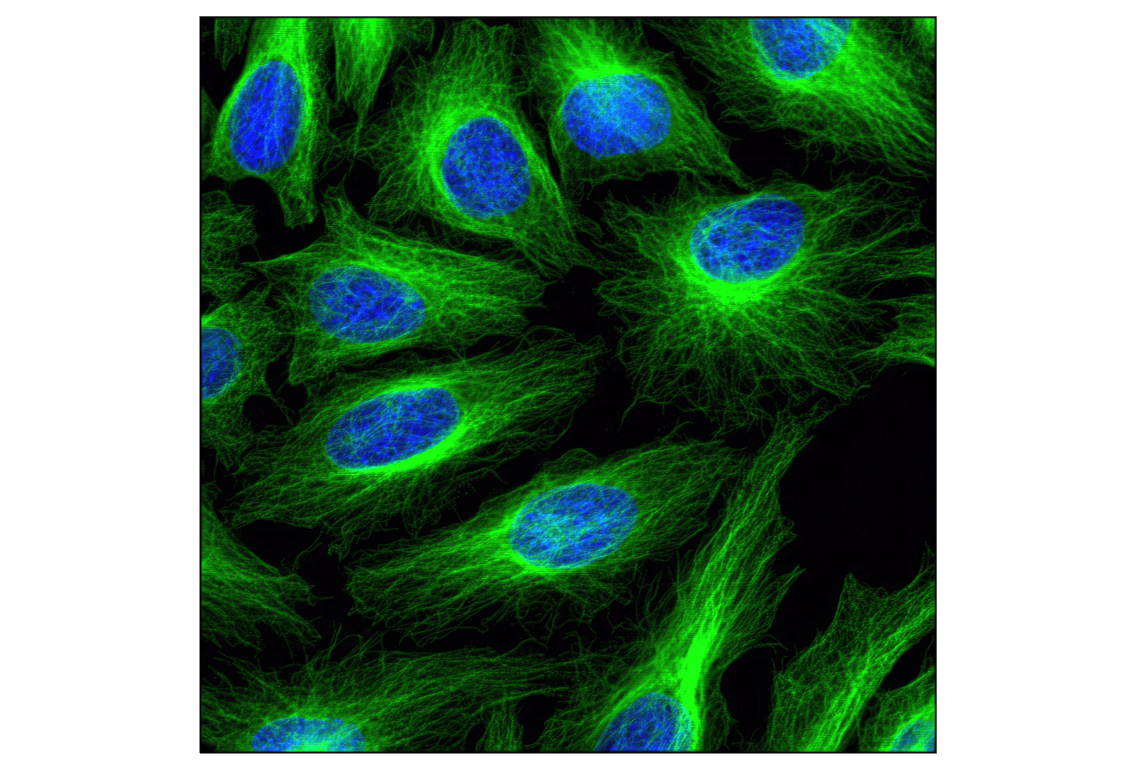 全部商品分类
全部商品分类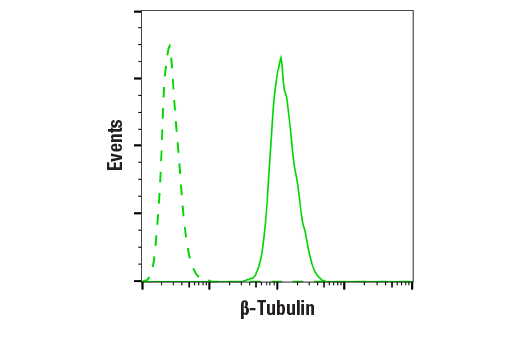



 下载产品说明书
下载产品说明书 下载COA
下载COA 下载SDS
下载SDS 用小程序,查商品更便捷
用小程序,查商品更便捷


 收藏
收藏
 对比
对比 咨询
咨询
Monoclonal antibody is produced by immunizing animals with a synthetic peptide corresponding to residues surrounding Tyr36 of human β-tubulin protein.


Product Usage Information
| Application | Dilution |
|---|---|
| Western Blotting | 1:1000 |
| Immunohistochemistry (Paraffin) | 1:50 |
| Immunofluorescence (Immunocytochemistry) | 1:50 - 1:200 |
| Flow Cytometry (Fixed/Permeabilized) | 1:50 - 1:200 |







Specificity/Sensitivity
Species Reactivity:
Human, Mouse, Rat, Monkey, Zebrafish, Bovine




Supplied in 10 mM sodium HEPES (pH 7.5), 150 mM NaCl, 100 µg/ml BSA, 50% glycerol and less than 0.02% sodium azide. Store at –20°C. Do not aliquot the antibody.
For a carrier free (BSA and azide free) version of this product see product #81253.


参考图片
Flow cytometric analysis of K-562 cells using β-Tubulin (9F3) Rabbit mAb (solid line) compared to concentration-matched Rabbit (DA1E) mAb IgG XP® Isotype Control #3900 (dashed line). Anti-rabbit IgG (H+L), F(ab')2 Fragment (Alexa Fluor® 488 Conjugate) #4412 was used as a secondary antibody.
Western blot analysis of extracts from COS-7, NIH/3T3 and PC12 cells, using β-Tubulin (9F3) Rabbit mAb.
Immunohistochemical analysis of paraffin-embedded human glioblastoma using β-Tubulin (9F3) Rabbit mAb.
Immunohistochemical analysis of paraffin-embedded human lung carcinoma using β-Tubulin (9F3) Rabbit mAb.
Immunohistochemical analysis of paraffin-embedded human melanoma using β-Tubulin (9F3) Rabbit mAb.
Immunohistochemical analysis of paraffin-embedded human breast carcinoma using β-Tubulin (9F3) Rabbit mAb preincubated with control peptide (left) or β-Tubulin Blocking Peptide #1032 (right).
Confocal immunofluorescent analysis of HeLa cells using β-Tubulin (9F3) Rabbit mAb (green). Blue pseudocolor = DRAQ5® #4084 (fluorescent DNA dye).



